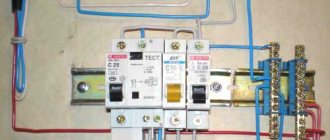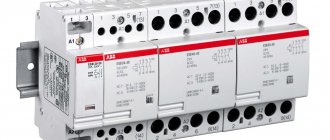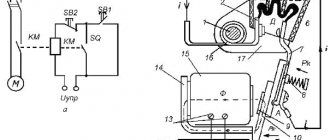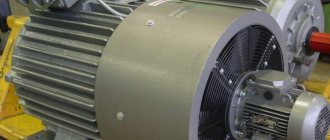There are four fundamental forces of physics, and one of them is called electromagnetism. Conventional magnets have limited use. An electromagnet is a device that creates a magnetic field when an electric current flows. Since electricity can be turned on and off, so can an electromagnet. It can even be weakened or strengthened by decreasing or increasing the current. Electromagnets find their use in a variety of everyday electrical appliances, in various industrial fields, from ordinary switches to spacecraft propulsion systems.
What is an electromagnet?
An electromagnet can be considered as a temporary magnet that functions with the flow of electricity and its polarity can be easily changed by changing the direction of the current. Also, the strength of an electromagnet can be changed by changing the amount of current flowing through it.
The scope of application of electromagnetism is unusually wide. For example, magnetic switches are preferred because they are less susceptible to temperature changes and are able to maintain rated current without nuisance tripping.
Electromagnets and their applications
Here are some of the examples where they are used:
- Motors and generators. Thanks to electromagnets, it has become possible to produce electric motors and generators that operate on the principle of electromagnetic induction. This phenomenon was discovered by scientist Michael Faraday. He proved that electric current creates a magnetic field. The generator uses the external force of wind, moving water or steam to rotate a shaft, which causes a set of magnets to move around a coiled wire to create an electric current. Thus, electromagnets convert other types of energy into electrical energy.
- Industrial use practice. Only materials made from iron, nickel, cobalt or their alloys, as well as some natural minerals, react to a magnetic field. Where are electromagnets used? One of the areas of practical application is metal sorting. Since the mentioned elements are used in production, iron-containing alloys are effectively sorted using an electromagnet.
- Where are electromagnets used? They can also be used to lift and move massive objects, such as cars before disposal. They are also used in transportation. Trains in Asia and Europe use electromagnets to transport cars. This helps them move at phenomenal speeds.
Superconducting electromagnet
The difference between a superconducting electromagnet and a conventional one is that, instead of a usual conductor, a superconductor is used in its winding. At the same time, its winding is cooled with liquid helium to very low temperatures. Its advantage is that the current in it reaches very high values, due to the fact that the superconductor has practically no resistance. Therefore, the magnetic field becomes stronger. The operation of such electromagnets is cheaper, since there are no heat losses in the winding. Superconducting magnets are used in MRI machines, particle accelerators and other scientific equipment.
Electromagnets in everyday life
Electromagnets are often used to store information, as many materials are capable of absorbing a magnetic field, which can then be read to retrieve information. They find application in almost any modern device.
Where are electromagnets used? In everyday life, they are used in a number of household appliances. One of the useful characteristics of an electromagnet is the ability to change its magnetic force by changing the strength and direction of the current flowing through the coils or windings around it. Speakers, loudspeakers and tape recorders are devices that implement this effect. Some electromagnets can be very strong, and their strength can be adjusted.
Where are electromagnets used in life? The simplest examples are doorbells and electromagnetic locks. An electromagnetic lock is used for the door, creating a strong field. As long as current passes through the electromagnet, the door remains closed. Televisions, computers, cars, elevators and photocopiers are where electromagnets are used, to name a few.
Strengthening the electromagnet
To understand how to increase the strength of a magnet, you need to understand the process of magnetization. This will happen if the magnet is placed in an external magnetic field with the opposite side to the original one. An increase in the power of the electromagnet occurs when the current supply increases or the turns of the winding are multiplied.
You can increase the strength of a magnet using a standard set of necessary equipment: glue, a set of magnets (you need permanent ones), a current source and an insulated wire. They will be needed to implement the methods of increasing the strength of a magnet, which are presented below.
Reinforcement with a more powerful magnet
This method involves using a more powerful magnet to strengthen the original one. To implement this, you need to place one magnet in the external magnetic field of another, which has greater power. Electromagnets are also used for the same purpose. After holding a magnet in the field of another, amplification will occur, but the specificity lies in the unpredictability of the results, since for each element such a procedure will work individually.
Strengthening by adding other magnets
It is known that each magnet has two poles, and each attracts the opposite sign of other magnets, and the corresponding one does not attract, only repels. How to increase the power of a magnet using glue and additional magnets. This involves adding other magnets to increase the final power. After all, the more magnets, the correspondingly greater the force. The only thing that needs to be taken into account is the connection of magnets with like poles. In the process, they will repel each other, according to the laws of physics. But the challenge is gluing, despite the physical difficulties. It is better to use glue that is designed for gluing metals.
Curie Point Enhancement Method
In science there is the concept of the Curie point. Strengthening or weakening of a magnet can be done by heating or cooling it relative to this point itself. Thus, heating above the Curie point or strong cooling (much below it) will lead to demagnetization.
It should be noted that the properties of a magnet when heated and cooled relative to the Curie point have an abrupt property, that is, having achieved the correct temperature, its power can be increased.
Method No. 1
If the question arises of how to make a magnet stronger if its strength is regulated by electric current, then this can be done by increasing the current supplied to the winding. Here there is a proportional increase in the power of the electromagnet and the current supply. The main thing is ⸺ gradual feeding to prevent burnout.
Method No. 2
To implement this method, the number of turns must be increased, but the length must remain the same. That is, you can make one or two additional rows of wire so that the total number of turns becomes larger.
This section discusses ways to increase the strength of a magnet at home; experiments can be ordered on the website.
Electromagnetic forces
The strength of the electromagnetic field can be adjusted by changing the electric current passing through the wires wrapped around the magnet. If the direction of the electric current is reversed, the polarity of the magnetic field also reverses. This effect is used to create fields in a computer's magnetic tape or hard drive for storing information, as well as in speaker speakers in radios, televisions, and stereo systems.
Definition of the word “Electromagnet” according to TSB:
An electromagnet is an electrical device, usually consisting of a conductive winding and a ferromagnetic core, which becomes magnetized (acquires the properties of a magnet) when an electric current passes through the winding. E. is used mainly to create magnetic flux (in electric machines) and force (in drive mechanisms). Despite their design diversity, electrical elements usually consist of the following parts that have the same purpose: a coil with a current-carrying winding, a magnetizing core (the stationary part of the magnetic circuit), and an armature (the moving part of the magnetic circuit), which transmits force to the parts of the driven mechanism. E. windings are made of insulated aluminum or copper wire (there are also E. with windings made of superconducting materials. See Superconducting magnet). Electromagnetic cores are made from soft magnetic materials—usually electrical or high-quality structural steel, cast steel and cast iron, iron-nickel and iron-cobalt alloys. To reduce losses due to eddy currents, magnetic circuits are made from a set of sheets. Depending on the method of creating the magnetic flux and the nature of the current magnetizing force, electrical circuits are divided into 3 groups: neutral direct current circuits, polarized direct current circuits, and alternating current circuits. In neutral electrons, the force of attraction depends only on the magnitude of the magnetic flux and does not depend on the direction of the current in the winding. in the absence of current in the winding, the magnetic flux, and therefore the force of attraction, is practically zero. In polarized electrodes, two independent magnetic fluxes are created: a polarizing flux, which is usually formed by the field of a permanent magnet (sometimes from another electromagnetic force), and a working magnetic flux, which arises under the influence of the magnetizing force of the working or control winding. If there is no current in them, the armature is acted upon attractive force created by polarizing magnetic flux. The action of such an electrode depends both on the magnitude of the magnetic flux and on the direction of the electric current in the working winding. In alternating current electricity, the winding is powered from an alternating current source, and the magnetic flux periodically changes in magnitude and direction, as a result of which the attractive force pulsates from zero to a maximum value with double the frequency relative to the frequency of the supply current. E. are also distinguished by a number of other characteristics: by the method of switching on the windings—with parallel and series windings. by nature of work - working in long-term, intermittent and short-term modes. according to the speed of action - high-speed and slow-acting, etc. The widest and most important area of application of electronics is electrical machines and devices included in industrial automation systems, control equipment, and protection of electrical installations. As part of various mechanisms, electric elements are used as a drive to carry out the necessary translational movement (rotation) of the working parts of machines or to create a holding force. Examples of such E. include E. of lifting machines, E. of clutches and brakes, E. used in various starters, contactors, switches, electrical measuring instruments, etc. It is promising to use E. in traction drives of high-speed vehicles to create n. magnetic pad. A developing area of application for electronics is medical equipment. For scientific purposes, E. is used in experiments. chemistry, biology, physics. Due to the breadth of application, the design, dimensions, and power consumption of E. are within wide limits. Depending on the purpose, electromagnets can weigh from fractions of a gram to hundreds of tons, consume electrical power - from fractions of a watt to tens of MW. Lit.: A. V. Gordon, A. G. Slivinskaya, Direct Current Electromagnets, M. - L. , 1960. Karasik V.R., Physics and technology of strong magnetic fields, M., 1964. Ter-Akopov A.K., Dynamics of high-speed electromagnets, M. - Leningrad, 1965. Slivinskaya A.G., Electromagnets and constants Magnets, M., 1972.M. I. Ozerov.
Magnetism and electricity
The dictionary definitions of electricity and magnetism are different, although they are manifestations of the same force. When electric charges move, they create a magnetic field. Its change, in turn, leads to the generation of electric current.
Inventors use electromagnetic forces to create electric motors, generators, MRI machines, levitating toys, consumer electronics and many other invaluable devices without which it is impossible to imagine the daily life of a modern person. Electromagnets are inextricably linked with electricity; they simply cannot work without an external power source.
Operating principle
The simplest electromagnet is obtained when a steel core is placed inside the solenoid, and an electric current is passed through the turns. As a result, the core is magnetized, which acquires the properties of a permanent magnet. Thus, an electromagnet is obtained in which the steel core, in the absence of electric current, is completely demagnetized.
The magnetic field created by the electromagnet is significantly higher than the field of the solenoid. In this case, the field of the core is superimposed on the field of the solenoid and, ultimately, the combined magnetic field obtained when exposed to electric current increases significantly.
Application of lifting and large-scale electromagnets
Electric motors and generators are vital in today's world. The motor takes electrical energy and uses a magnet to convert electrical energy into kinetic energy. A generator, on the other hand, converts motion using magnets to generate electricity. When moving large metal objects, lifting electromagnets are used. They are also necessary when sorting scrap metal, to separate cast iron and other ferrous metals from non-ferrous ones.
A real miracle of technology is a Japanese levitating train capable of reaching speeds of up to 320 kilometers per hour. It uses electromagnets to help it float in the air and move incredibly fast. The US Navy is conducting high-tech experiments with a futuristic electromagnetic rail gun. She can direct her projectiles over considerable distances with great speed. The projectiles have enormous kinetic energy, so they can hit targets without the use of explosives.
Where can electromagnets be used in medicine?
Magnetic resonance imaging (MRI) scanners also operate using electromagnets. This is a specialized medical method for examining internal human organs that are not accessible for direct examination. Along with the main one, additional gradient magnets are used.
Where are electromagnets used? They are present in all types of electrical devices, including hard drives, speakers, motors, and generators. Electromagnets are used everywhere and, despite their invisibility, occupy an important place in the life of modern man.
Calculations
Before you start assembling an electromagnet with your own hands, make a preliminary calculation of its parameters. Structural elements are calculated separately for DC and AC EVs.
For DC
Before making calculations, the required value of the magnetomotive force (MF) of the coil is determined. The winding parameters must provide the required MMF, at the same time the coil must not overheat, otherwise the insulating layer of the winding wire will be lost. The initial data for the calculation are the voltage in the wire of the electromagnetic coil and the required value of the magnetomotive force.
Methods for calculating DC electromagnets are constantly published on the Internet. There you can also select formulas for determining the MMF, the cross-section of the core and winding wire, and its length.
Additional Information. Mostly on the Internet they look for calculations of 12 volt electromagnets made by themselves. Depending on your needs, you can take different calculation paths. Basically, “recipes” are chosen to determine the cross-section and length of the winding wire powered by a standard “A” or “AA” format battery.
For AC
The basis for EM AC is the calculation of the winding. As in the previous case, they are guided by the initial requirements for the MMF value. Despite the large number of recommended calculation formulas, most often the “capabilities” of a device are determined by an experienced selection of the parameters of its design parts. Methods for calculating EM alternating current can always be found on the World Wide Web (Internet).











